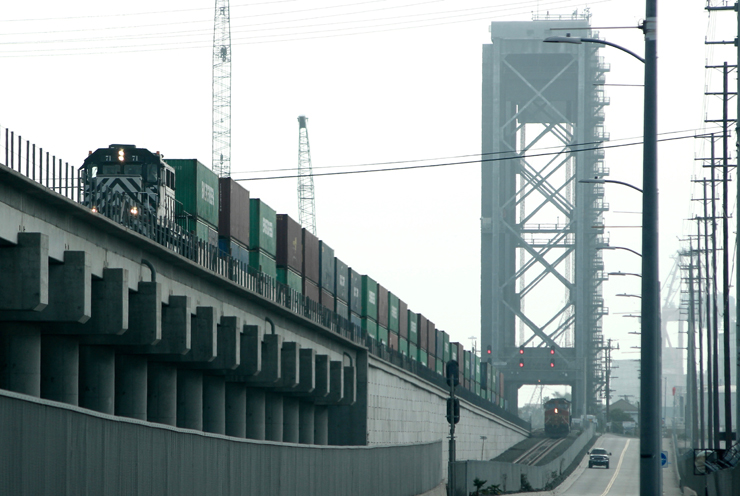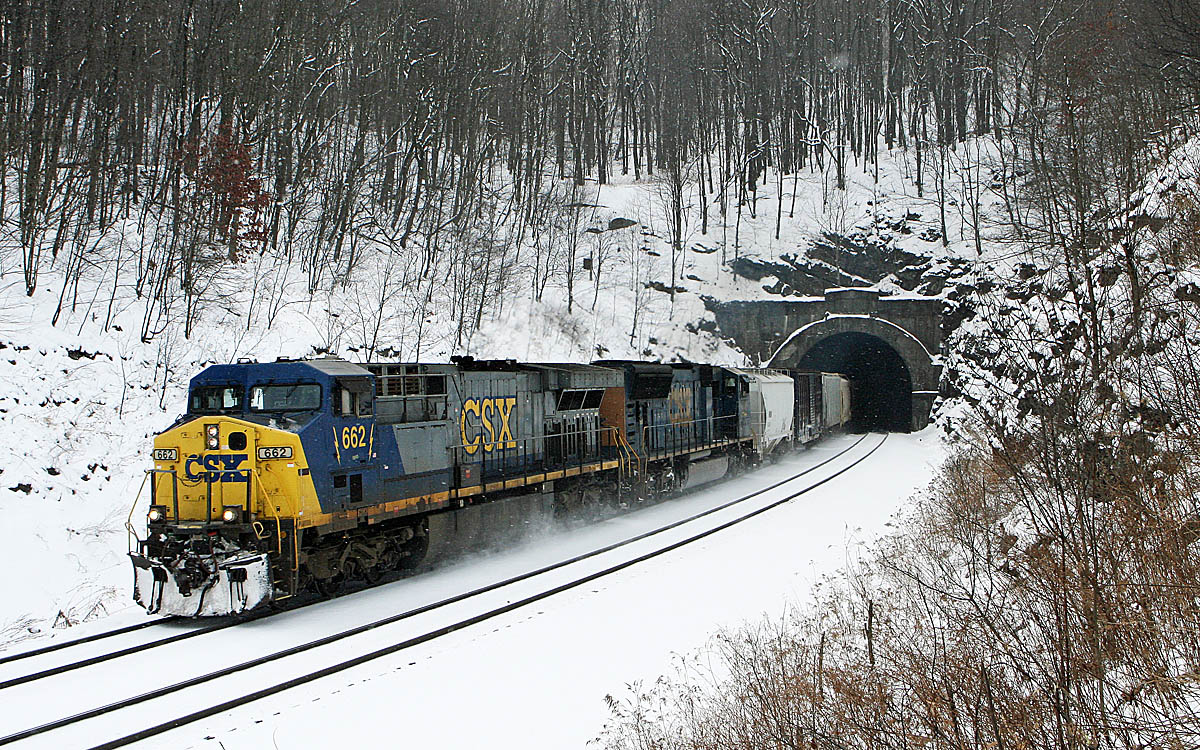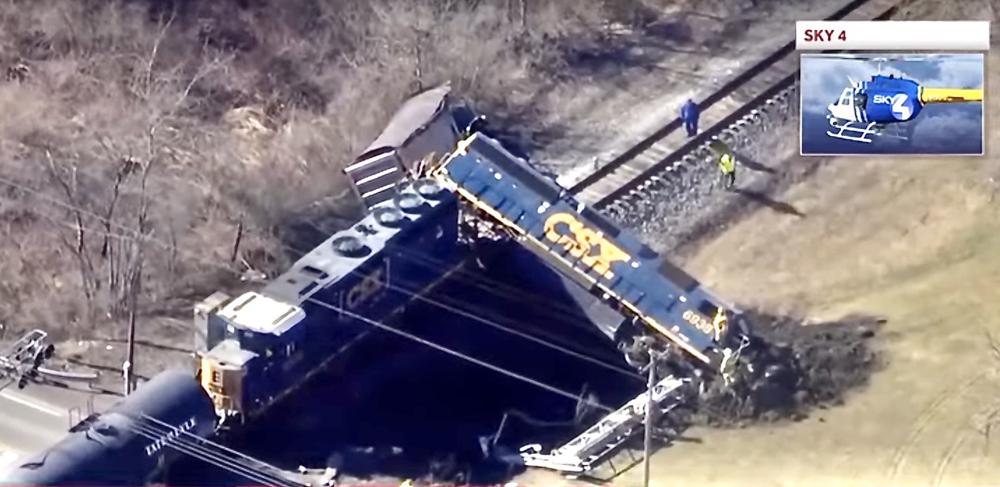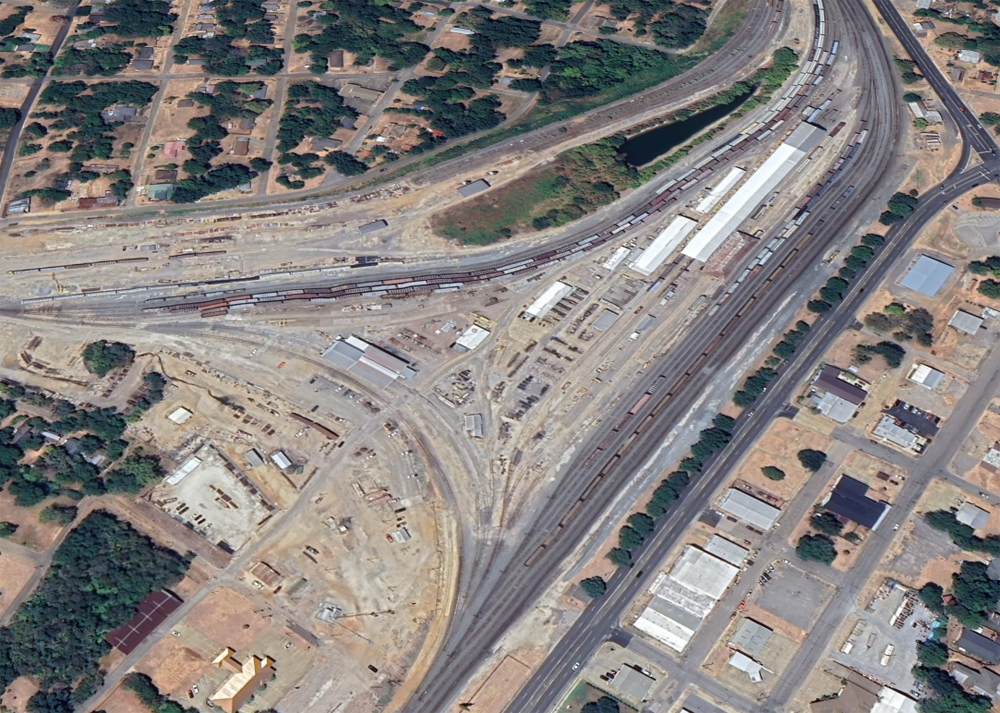NEW YORK – The full impact of the global coronavirus epidemic will soon be felt on North American railroads due to the lull in Chinese manufacturing and exports that feed intermodal volume, rail executives said this week.
Container volumes have already begun to sink at North American ports. At the Port of Los Angeles, for example, February container volume fell nearly 23%, the port announced on Tuesday.
International intermodal represents about half of all U.S. intermodal volume. Overall U.S. intermodal volume was down 12.5% last week, according to the Association of American Railroads.
“We’ve not seen the impact yet from the extended Chinese New Year volumes. But we expect to see this show up in our intermodal volumes over the coming weeks,” CSX Transportation CEO Jim Foote told an investor conference on Wednesday morning.
Steamship companies serving China have cancelled scheduled sailings in recent weeks due to the coronavirus impact on manufacturing and transportation in China. But the shipping lines have an optimistic view that trade will quickly return to normal after quarantine-related shutdowns that extended the traditional Chinese New Year holiday period, Foote says.
CSX will be able to handle the anticipated surge in international intermodal traffic, whether it comes via interline service from West Coast ports or lands at East Coast ports the railroad serves, Foote says.
“We’ve got a great running railroad and capacity to handle traffic changes, whether it comes east or west,” he says.
International intermodal volumes will see the largest impact from the coronavirus in the near term in Canada, as well, Canadian Pacific Chief Financial Officer Nadeem Velani told investors and analysts on Tuesday. The railway expects international container volume to slump in the second half of March and into early April before rebounding.
CP sees a “quick recovery” as retailers and manufacturers restock their inventories, which have been depleted amid extended manufacturing shutdowns in China, where the virus first began to spread.
“We don’t see this as lost volumes,” Velani says.
The economic impact of the coronavirus shuddered global stock, bond, and commodity markets this week. And an oil price war between Saudi Arabia and Russia sent crude oil prices plunging.
That prompted a large Canadian oil producer, Cenovus, to announce that it would temporarily cease shipping crude by rail. It has contracts with both Canadian National and CP.
Both Canadian railways have contracts with minimum volume commitments, meaning oil producers will have to pay even if they don’t ship crude oil by rail.
“We are fully protected when it comes to crude by rail on the downside,” Velani says.
Even if CP didn’t haul another carload of crude after the first quarter ends, the impact would not be enough to make the railway change the low end of its earnings guidance for the year, he says.
“Crude by rail isn’t going to make or break our franchise,” he says.
Foote and Velani spoke at the J.P. Morgan Industrials Conference.
Executives from Canadian National, Norfolk Southern, and Union Pacific cancelled their scheduled appearances at the conference when it was switched to a virtual format amid the spread of the coronavirus.















Expecting the Ports of LA & Long Beach to be affected here
Sorry, ” 68.7 million people in the US are over 60 “…..
Andy – You are correct, and I was only using the numbers from a previous post ” (point) .1 ”
Curt – The post said ” over all age groups ” and used the entire population. I doubt that over 33 million would die. The thing is, that 68.7 million people in the US. Many with underlying conditions, which make things worse.
Thomas – I believe your post is correct, which would bring it back to 1%.
Raymond…your number is 10% of the US population. I believe 0.1% would total 330,417.149. Also, is the statistic with respect to the total population or of those who contract the virus? I’m not trying to trivialize…just understand the actual numbers.
Folks on here who are citing mortality rates for covid 19 are not looking at CDC data. The stated rate of 0.1% is inaccurate. That stat applies to seasonal flu. Covid is 10x that rate.
From the stats I’ve read; the mortality rate applies only to those who have contracted the virus.
Manufactured panic.
Let’s see. The US population is 330,417,149. A “mortality rate of around(point) .1% over all age groups” is only 33,041,714.90. Sounds like a good time to be an undertaker.
Maybe the US could go ahead and produce Its own goods again.
Gerald and Charles are proof republicans just can’t accept facts or science.
Gregg Spindler,
I can pretty much guarantee you that any oil shipments halted because of the price ware between Russia and Saudi Arabia(which has little to do with the coronavirus and more to do with Putin wanting to shut down U.S. shale production) would not fall under “force majeure” provisions. The price war between Russia and Saudi Arabia is not a natural disaster…that is man made. Also, I suggest you do some research on COVID-19 before spouting statistics, it has a mortality rate of around (point) .1% over all age groups, it hasn’t reached Africa, where it will probably really wreck havoc. I personally am not worried one bit about it, I probably won’t even know if I get it since most cases are mild to no symptoms at all.
I do think you’ll see a surge of international intremodal once things settle down, production needs to resume and many parts to produce things even in the U.S. come from China, businesses will need to restock depleted parts inventories. Will volume spring back to pre-virus levels, that I can’t tell you, but it will rebound, just like travel will rebound, spending will rebound., etc., etc., etc.,…once the truth is out there and not all this fake news(the only time I agree with Trump on the news being fake, as most of it is and not based on real facts).
“Both Canadian railways have contracts with minimum volume commitments, meaning oil producers will have to pay even if they don’t ship crude oil by rail”
What kind of PR happy talks is THAT?
Ask their legal departments to see if they have “force majeure” provisions in those pieces of paper… no doubt pandemic is “force majeure”. They can use those pieces papers in the fireplaces this winter.
The notion that lost shipping volumes will be made up soon as a surge in volume as Foote-in-the-mouth says is utter rubbish. Does American Airlines or Cathay Pacific think the empty seats and cancelled slights will be made up with a “surge”? Of course not. Wal-Mart and Amazon are not going to sell more Chinese trinkets once the COVID-19 surges through North America. There will be no surge in volume in the US when we experience a pandemic.
Regarding anyone that things COVID-19 is a hoax of some kind, ask yourself why did China basically quarantine 600 million people? Why did Italy shut down their entire country? For the heck of it? Try an imagine what the cost of these actions are on their economies for a few moments. There will be a huge global recession as a result and millions of people will be dying. Tell us what you think of this “hoax” a year from now.
Bill, I understand you are a reporter… how about some analysis and occasional criticism on your blog once in a while like Fred Frailey did? Please don’t be a stenographer.
Manufactured in the land of the masses, PRC. Or just another communist conspiracy.
I volunteer on 3751 at Redondo Junction, close to the UP and BNSF lines coming from the ditch going to the L.A./Long Beach Harbor. I would guess stack trains coming from the harbor are down over 50 %, maybe more so on the BNSF. Much (maybe over 50 %) of the boxes coming ashore stay in Southern California but certainly the portion going further east is really down.